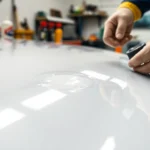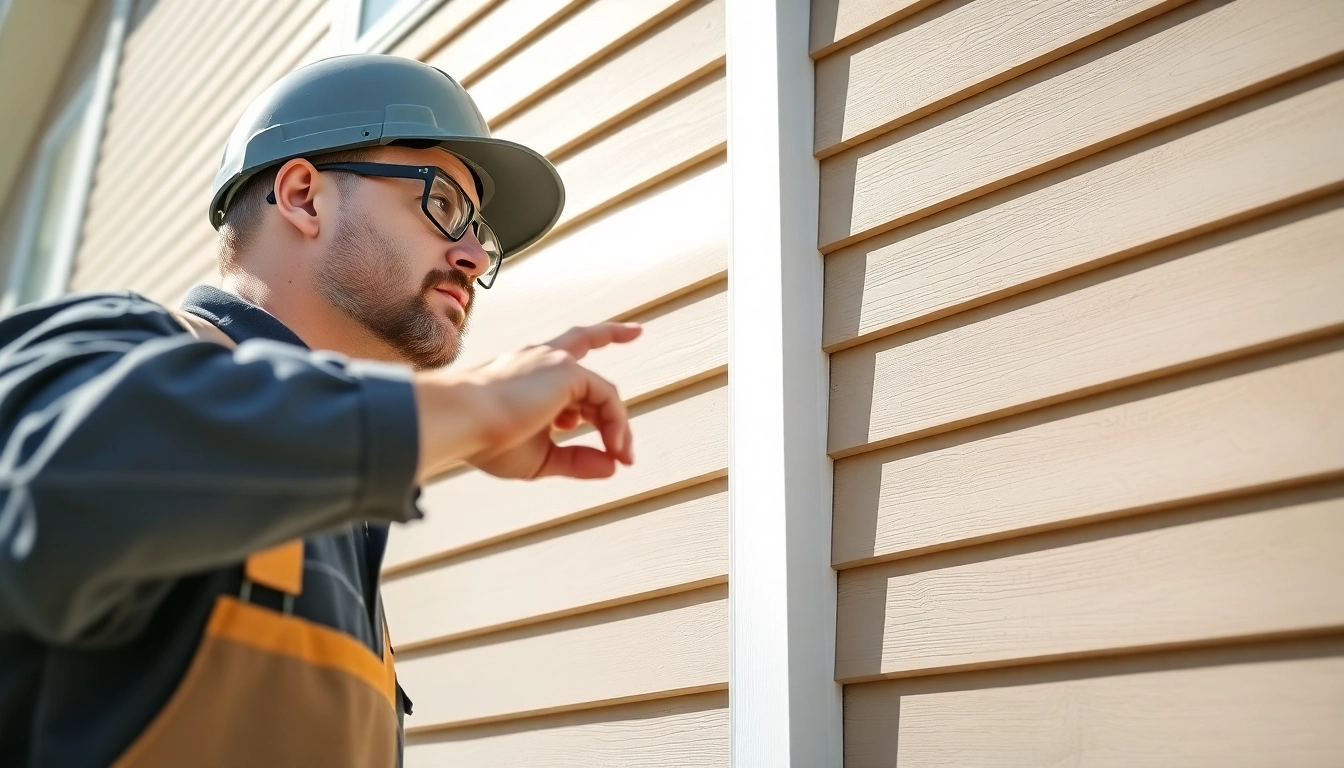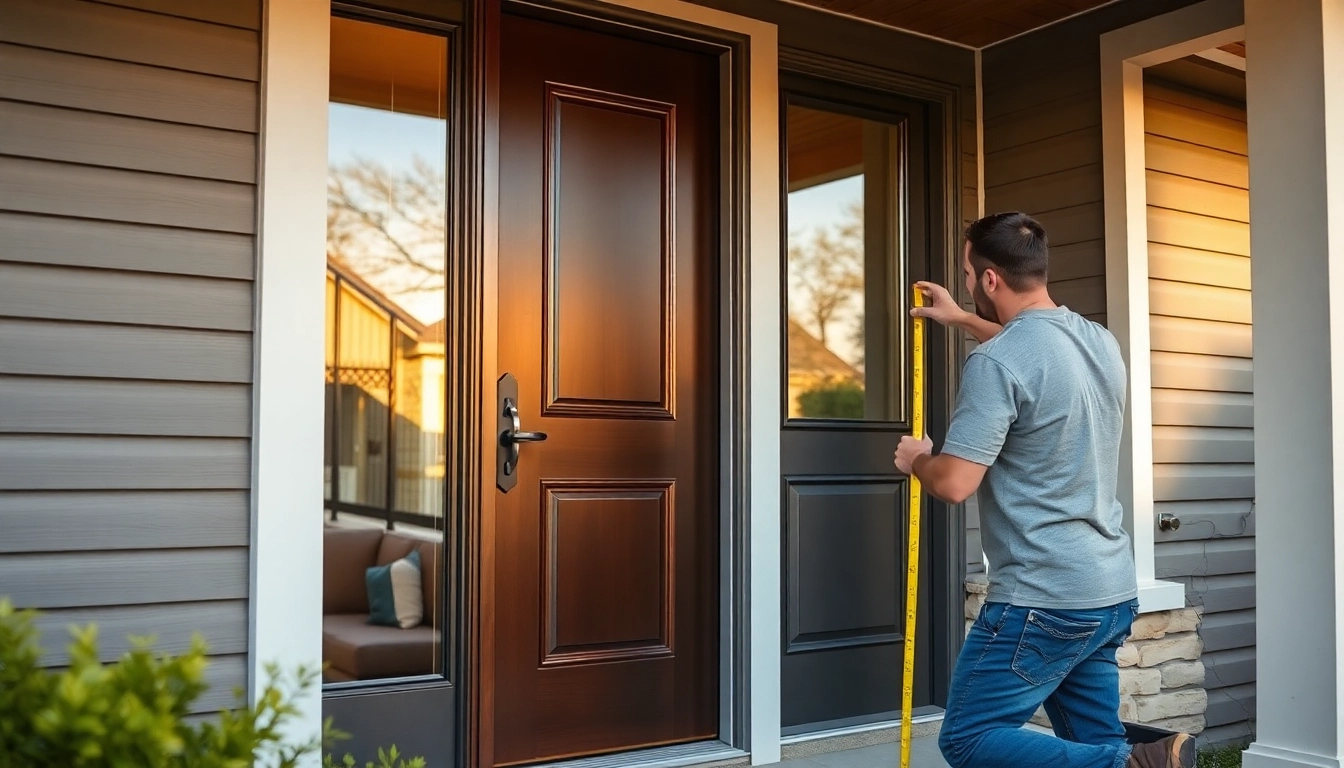Understanding Siding Options and Material Benefits
When it comes to enhancing your home’s exterior, choosing the right siding is a critical decision that impacts curb appeal, durability, energy efficiency, and overall value. As a leading siding contractor, Morgan’s Construction LLC offers expert guidance to help you navigate the myriad of options available. This comprehensive guide delves into the primary siding materials—vinyl, cedar, fiber cement, and metal—examining their unique benefits and considerations to ensure you select the optimal solution for your property.
Types of siding: vinyl, cedar, fiber cement, and metal
Each siding material boasts distinct characteristics suited to specific aesthetic preferences, climates, and budgets. Understanding these differences is vital for making an informed choice.
- Vinyl Siding: Vinyl is the most popular siding material in residential construction due to its affordability, low maintenance, and wide range of styles and colors. It is made from polyvinyl chloride (PVC) and is known for its weather resistance. Modern vinyl siding is designed to mimic the look of wood or other materials, making it a versatile option.
- Cedar Siding: Crafted from natural cedar wood, this siding offers unmatched aesthetic appeal with its natural grain and charm. Cedar is naturally resistant to pests and decay, and it ages gracefully, developing a unique patina over time. It requires regular maintenance, such as staining or sealing, to preserve its beauty.
- Fiber Cement Siding: Combining Portland cement, sand, cellulose fibers, and water, fiber cement is celebrated for its strength, durability, and fire resistance. It can be manufactured to resemble wood, stucco, or masonry, giving homeowners flexibility in design. Though more expensive upfront, fiber cement offers long-term savings due to its longevity.
- Metal Siding: Typically made from aluminum or steel, metal siding provides excellent durability and a modern aesthetic. It is highly resistant to weather and pests, offers low maintenance, and can be customized through powder coating for color durability. It’s a popular choice for contemporary homes and commercial buildings.
Comparing durability, maintenance, and aesthetic appeal
A critical aspect of selecting siding is understanding how each material performs over time:
| Material | Durability | Maintenance | Aesthetic Flexibility | Longevity |
|---|---|---|---|---|
| Vinyl | Moderate; susceptible to cracking in extreme cold or heat | Low; periodic cleaning and inspections | High; available in numerous styles and colors | 20-40 years |
| Cedar | High; naturally resistant but prone to weathering | High; regular staining or sealing required | Excellent; natural wood look with age-related charm | 30-50 years with proper care |
| Fiber Cement | Very high; resistant to pests, fire, and rot | Low; occasional cleaning and painting | Good; can mimic various styles, including wood and stucco | 50+ years |
| Metal | Excellent; resistant to pests, moisture, and fire | Low; periodic cleaning and inspections | Moderate; mostly uniform appearance, available in profiles and colors | 40-70 years |
Choosing the right siding for your climate and budget
Climate considerations significantly influence siding durability and maintenance requirements. For example, homes in coastal areas with high humidity or salt exposure benefit from metal or fiber cement siding due to their resistance to moisture and corrosion. Conversely, regions experiencing intense cold may favor fiber cement over vinyl to avoid cracking.
Budget plays a vital role in the selection process. Vinyl siding generally offers the lowest initial cost and maintenance expenses, making it accessible for most homeowners. Cedar provides a premium aesthetic but requires higher maintenance costs. Fiber cement, although more costly upfront, offers exceptional durability and longer lifespan, translating to better long-term value.
An experienced siding contractor can assess your local climate, aesthetic preferences, and budget constraints to recommend the most suitable material. At Morgan’s Construction LLC, we prioritize personalized solutions that balance cost, durability, and visual appeal, ensuring your home’s exterior siding enhances both its resilience and beauty.
The Siding Installation Process: From Consultation to Completion
Initial consultation and site assessment
The journey to a flawless siding installation begins with a comprehensive consultation. Our team conducts an on-site evaluation, inspecting your current exterior, measuring dimensions, and assessing structural considerations. We gather insights into your aesthetic goals, budget, and timeline to develop a tailored plan.
During this phase, we also review the existing siding for damage or decay, proposing suitable removal and replacement strategies. This initial step is crucial to identify potential challenges, such as insulation upgrades, window or door modifications, and weatherproofing needs.
Preparation, removal, and precise installation techniques
Proper preparation ensures the longevity and performance of your new siding. Our team meticulously removes the old siding, discarding debris and inspecting the underlying structure for rot or pest infestation. Repair work is conducted as needed before the new siding installation.
The installation process employs cutting-edge techniques to guarantee a secure fit and weather-tight seal. We utilize quality fastening systems, ensure proper overlaps, and execute detailed flashings around windows, doors, and corners. Advanced tools and adherence to manufacturer specifications minimize gaps, warping, and other issues.
For example, fiber cement siding requires precise nailing to prevent cracking, while vinyl siding demands proper expansion joints. Training and experience are essential for installers to manage these nuances effectively.
Final inspection and cleanup for quality assurance
Once installation concludes, a rigorous final inspection verifies that all siding components are correctly aligned, fastened, and sealed. We assess aesthetic consistency, check for gaps, and ensure all flashing and trim are properly installed.
Cleaning up the site, removing all debris and leftover materials, is a vital last step. A clean work environment not only showcases our professionalism but also helps you enjoy your renewed exterior immediately.
Our commitment to quality assurance means that we perform follow-up inspections if necessary and provide maintenance recommendations to maximize your siding investment.
Cost Factors and Budget Planning for Siding Projects
Factors impacting siding costs: material, size, and complexity
Siding project costs vary significantly based on several key factors:
- Material Choice: Premium materials like fiber cement and Hardie board carry higher costs than vinyl or aluminum.
- Surface Area: Larger homes require more material and labor, increasing overall expenses.
- Architectural Complexity: Homes with intricate designs, multiple levels, or complex trim details demand additional time and expertise.
- Labor Costs: Regional labor rates can vary, influencing total expenses.
- Preparations and Repairs: Addressing underlying issues or structural repairs adds to the budget.
Average pricing for different siding materials in 2025
Understanding current market prices helps you plan your budget wisely:
- Vinyl Siding: $2.50 to $7.00 per square foot, averaging around $5.00 for mid-range options.
- Cedar Siding: $6.00 to $12.00 per square foot, depending on grade and finish.
- Fiber Cement (Hardie Board): $8.00 to $12.00 per square foot, including installation.
- Metal Siding: $7.00 to $15.00 per square foot, influenced by profile and coating.
For a typical 2000 sq ft home, total costs can range from approximately $10,000 for vinyl to over $40,000 for premium fiber cement or metal options.
Precise quotes from a reputable contractor like Morgan’s Construction LLC will account for variables such as local labor rates, material costs, and scope of work.
Getting accurate quotes from trusted siding contractors
To ensure transparent and fair pricing, solicit detailed, written estimates from multiple reputable contractors. During assessments, inquire about:
- Itemized costs for materials and labor
- Projected timeline
- Warranty coverage
- Permitting and inspection fees
Choosing a contractor with proven experience, solid references, and a track record of quality work—like Morgan’s Construction LLC—reduces the risk of costly overruns and future repairs.
How to Select a Reliable Siding Contractor
Key qualities: experience, licensing, and reputation
A trustworthy siding contractor should possess extensive industry experience, valid licensing, and positive customer feedback. Experienced installers understand material intricacies, proper installation techniques, and local building codes, which directly impact the durability and safety of your siding.
Verify licensing and insurance coverage to protect yourself from liability. Reputable companies like Morgan’s Construction LLC are licensed and insured, demonstrating professionalism and accountability.
Importance of reviews and portfolio showcases
Reviewing customer testimonials and examining previous project galleries offers insight into a contractor’s craftsmanship and reliability. A well-maintained portfolio showcases diverse styles, attention to detail, and successful project execution.
Online platforms such as Yelp, Angi, and Houzz provide verified reviews. Directly requesting references from your chosen contractor is also recommended to verify their work quality.
Questions to ask during your contractor interview
Effective interviewing ensures you engage a contractor who aligns with your expectations:
- How long have you been in business?
- Can you provide references from recent clients?
- Are you licensed and insured?
- What materials do you recommend and why?
- What warranties do you offer on workmanship and materials?
- What is your estimated timeline for completion?
Clear communication and detailed answers are indicators of a professional, client-focused contractor.
Maintaining Your Siding for Long-Term Performance
Routine inspections and cleaning tips
Regular maintenance prolongs siding lifespan and preserves aesthetic appeal. Schedule inspections at least once annually, inspecting for:
- Cracks, chips, or warping
- Loose or missing fasteners
- Signs of mold, mildew, or staining
- Damage from storms or pests
Cleaning involves gentle washing with a garden hose, mild soap, and soft-bristled brushes. For stubborn stains, specialized siding cleaners or low-pressure power washing can be used, ensuring no damage to the surface.
Signs of damage and when to call a professional
While minor issues can sometimes be addressed by homeowners, significant damage warrants professional intervention. Indicators include:
- Large cracks or holes
- Persistent mold or mildew not removable by cleaning
- Warping or sagging siding
- Loose panels or hardware
Prompt repairs prevent water intrusion, structural deterioration, and escalating costs. Working with a trusted siding contractor ensures proper repairs and future performance.
Enhancing curb appeal through regular updates and repairs
Renovating or replacing damaged siding can dramatically improve your home’s appearance. Fresh paint, stain, or siding color updates allow you to refresh your exterior’s look, increasing curb appeal and property value.
Consistent maintenance, timely repairs, and upgrades keep your siding functioning optimally for decades. High-quality materials and professional installation by experts such as Morgan’s Construction LLC guarantee lasting beauty and performance.








